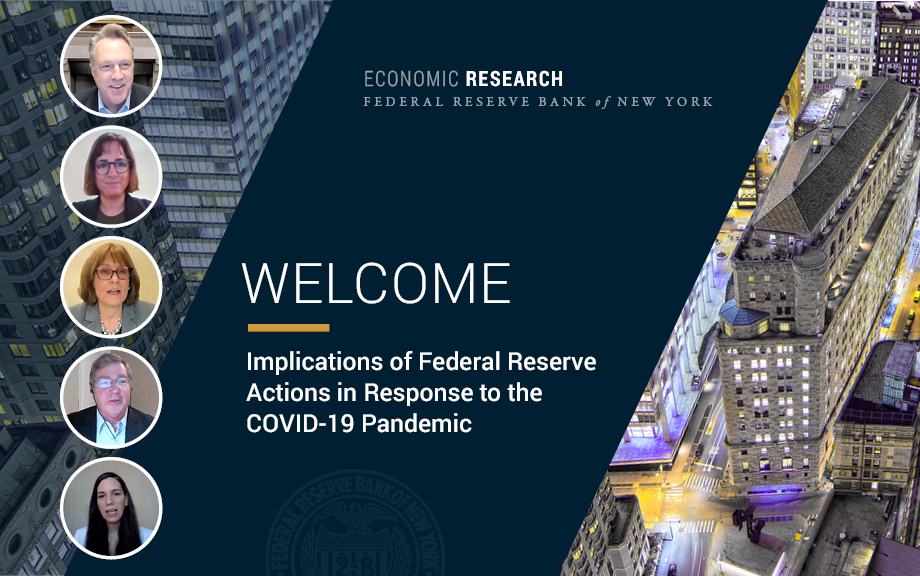How Much Have Consumers Spent on Imports during the Pandemic?

The return of U.S. real GDP to its pre-pandemic level in the second quarter of this year was driven by consumer spending on goods. Such spending was well above its pre-pandemic path, while spending on services was well below. Despite the surge in goods spending, domestic manufacturing has increased only modestly, leaving most of the increase in demand being filled by imports. While higher imports have been a drag on growth, the size of this drag has been moderated by the value created by the domestic transportation, wholesale, and retail sectors in selling these goods. Going forward, a rebalancing of consumer spending toward services could give a lift to growth, by shifting demand toward purchases with little import content.
Severe Supply Disruptions Are Impeding Business Activity in the Region

As the economy continues to recover from the pandemic recession, many businesses are struggling to keep up with surging demand amid widespread supply shortages and delays. While a rare phenomenon before the pandemic, supply chain disruptions have become increasingly common, with transportation of goods becoming especially tricky due to myriad issues such as clogged ports and difficulty finding truck drivers. Indeed, such supply disruptions are expected to continue into next year. Our October regional business surveys asked firms to what extent, if any, they are being affected by supply problems and what measures they have taken in response. Difficulty obtaining supplies was nearly universal among survey respondents, affecting about 80 percent of service firms and 95 percent of manufacturers. A large share of businesses in the region have responded to the disruptions by increasing their selling prices and scaling back their operations.
The International Experience of Central Bank Asset Purchases and Inflation

Recent inflationary pressures in the global economy have rekindled the debate on the link between money growth and price stability. Specifically, does rapid central bank money creation resulting from large-scale purchases of government securities fuel inflationary spending by households and firms? We argue that there are many valid reasons to be skeptical about this textbook narrative. In this post, we look at the international experience with regard to asset purchases, money growth, and inflation dynamics in the pre-COVID era in an attempt to draw lessons from the recent past. Most notably, we find that the view that large-scale purchases of sovereign debt cause unmanageable inflationary pressures is not supported by the experiences of foreign advanced economies. As a matter of fact, despite the extent and duration of the quantitative easing programs in those economies, central banks faced challenges in achieving their inflation objectives.
Were Banks Exposed to Sell‑offs by Open‑End Funds during the Covid Crisis?

Should open-end mutual funds experience redemption pressures, they may be forced to sell assets, thus contributing to asset price dislocations that in turn could be felt by other entities holding similar assets. This fire-sale externality is a key rationale behind proposed and implemented regulatory actions. In this post, I quantify the spillover risks from fire sales, and present some preliminary results on the potential exposure of U.S. banking institutions to asset fire sales from open-end funds.
At the New York Fed: Implications of Federal Reserve Actions in Response to the COVID‑19 Pandemic

On September 30 and October 1, 2021, the New York Fed held a virtual conference on the implications of the Fed’s actions in response to the COVID-19 pandemic. New York Fed President John Williams gave the opening and concluding remarks.
Insurance Companies and the Growth of Corporate Loan Securitization
Collateralized loan obligation (CLO) issuances in the United States increased by a factor of thirteen between 2009 and 2019, with the volume of outstanding CLOs more than doubling to approach $647 billion by the end of that period. While researchers and policy makers have been investigating the impact of this growth on the cost and riskiness of corporate loans and the potential implications for financial stability, less attention has been paid to the drivers of this phenomenon. In this post, which is based on our recent paper, we shed light on the role that insurance companies have played in the growth of corporate loans’ securitization and identify the key factors behind that role.
An Update on the U.S.–China Phase One Trade Deal

A Liberty Street Economics post from last summer by Matthew Higgins and Thomas Klitgaard contained an assessment of the Phase One trade agreement between the United States and China. The authors of that note found that, depending on how successfully the deal was implemented, the impact on U.S. economic growth could have been substantially larger than originally foreseen by many of its critics, as a result of the fact that the pandemic had depressed the U.S. economy far below its potential growth path. Here we take another look at these considerations with the benefit of an additional year’s worth of trade data and a much different economic environment in the United States.
Oil Prices, Global Demand Expectations, and Near‑Term Global Inflation

Oil prices have increased by nearly 60 percent since the summer of 2020, coinciding with an upward trend in global inflation. If higher oil prices are the result of constrained supply, then this could pose some stagflation risks to the growth outlook—a concern reflected in a June Financial Times article, “Why OPEC Matters.” In this post, we utilize the demand and supply decomposition from the New York Fed’s Oil Price Dynamics Report to argue that most of the oil price increase over the past year or so has reflected improving global demand expectations. We then illustrate what these changing global demand expectations might mean for near-term global inflation developments.










 RSS Feed
RSS Feed Follow Liberty Street Economics
Follow Liberty Street Economics